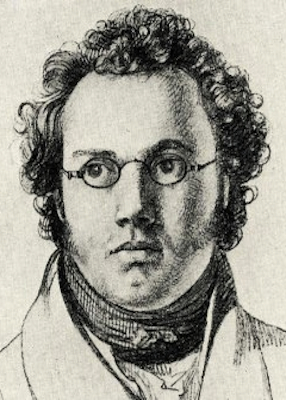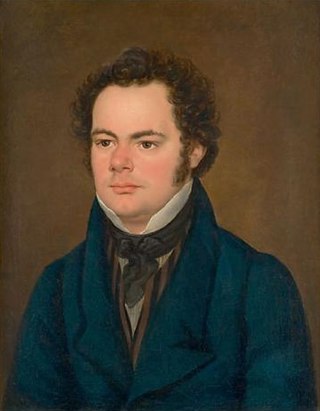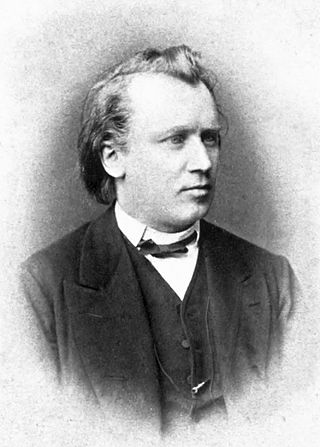Movements
The sonata is in three movements, which are played without a break:
- Fantasie
- Thema mit Variationen
- Finale (mit Variationen)
Fantasie
Ruhig – Sehr Breit – Im Zeitmaß – Breit At about three minutes in length, this is the shortest of the movements, and also the freest in form and harmonic exploration, passing through roughly ten keys in the space of 41 measures. The viola introduces the main theme of the sonata in the key of F, over hushed piano accompaniment; the piano soon picks up this melody and the two instruments begin to develop a rhythmic figure that serves as a sort of coda to the theme. The piano then falls back to a subsidiary role with shimmering thirty-second note accompaniment, while the theme builds in the viola to a powerful, C-major cadenza. The music picks up again quietly in E minor on the piano, as the viola plays a decorative rhythmic figure. The theme returns quickly and is passed between the instruments in a show of virtuosity for the soloist. After a final, powerful statement, the music comes to rest in D; the piano attempts to stray to the minor mode with G-minor chords and F-naturals, but the viola insists on rising to an F-sharp. Alone now, the viola rises by whole steps to A-sharp, which is sustained enharmonically to B-flat as the beginning of the next movement.
Thema mit Variationen
Ruhig und einfach, wie ein Volkslied
- Var. I Dasselbe Zeitmaß
- Var. II ein wenig kapriziös
- Var. III Lebhafter und sehr fließend
- Var. IV noch lebhafter
The theme of the second movement is, as the marking suggests, a simple, folkish tune introduced in e-flat minor by the viola. The theme is notable for bearing a time signature of both 2/4 and 3/4; Hindemith finds this a convenient solution for notating phrases of different lengths without resorting to abolishing bar lines or notating time signature changes nearly every bar. Variation III and the third movement also make extensive use of this technique.
The variations proceed as follows: Variation I is in 6/8 time, with the melody, now in E-Flat minor reduced to notes of equal length, played in a contrapuntal overlap by the piano and viola. Variation II returns to 2/4, and is a spry, rhythmic rendition of the theme in the viola over an accompaniment of staccato thirds and sixths. Variation III is lyrical and sweeping, in the key of E-Flat. Long lines in the viola contrast a moto perpetuo accompaniment of sixteenth and thirty-second notes in the piano. Variation IV reaches a climax, with an ostinato accompaniment providing the grounding for the off-kilter rhythmic setting of the theme. Hindemith introduces a non-traditional key signature (G-sharp and F-Sharp only) that sets the music in a whole-tone mode; while the viola does occasionally play runs and phrases with half-steps, the piano persists in the figure G#-F#-E-D, over which the viola builds towards a climax in C-sharp minor, which is the first note of the third movement.
Finale (mit Variationen)
- Sehr lebhaft – Breit – Leicht fließend
- Var. V Ruhig fließend
- Sehr lebhaft
- Var. VI Fugato, mit bizarrer Plumpheit vorzutragen
- Im Hauptzeitmaß – Wie vorhin leicht fließend – Ruhig fließend
- Var. VII Coda
- Wild – Noch mehr treiben – Breiter
This movement is the apotheosis of Hindemith's mastery of classical forms. It functions both as an unusual set of variations, as its name suggests, and as a full-fledged Sonata-Allegro movement. As indicated by the continuation of variations numbers from the previous movement, the theme being varied is the one from that movement, which functions as the second theme in Sonata-Allegro terminology. The first theme, introduced immediately at the beginning of the movement, is the very distinctive figure of a turn followed by an ascending scale. This figure is played and elaborated on by the soloist, with the pianist providing tonicizing changes of harmony at each instance of the turn figure. The viola then transforms this figure into the beginning of a more lyrical theme, which brings the music down in tempo and dynamic level. The main theme returns momentarily, only to falter and give way to a new quiet theme which is a continuance of the rhythmic developments made by the first softer section. This theme, quick downward steps followed by a gentle Mannheim rocket and another set of descending steps, may easily be mistaken for a second theme, when in fact it is an extension and transformation of the movement's opening gesture.
The music comes completely to rest before the viola re-introduces the second movement theme in Variation 5. After a simple statement of the theme, the piano and viola engage in call-and-response on a theme derived from the rhythm of the second movement's first variation. After some varied tonal wanderings, there is a strong buildup of dominant-preparation for A-flat major, in which key the piano restates the folk song theme while the viola plays the rhythmic coda-variant as a sort of counter-subject, creating a brilliant and beautiful synthesis. This leads into a headlong acceleration, with running eighth notes in the piano set against off-beat tied notes in the viola. The soloist recaps the second movement theme in its original form, albeit at a breakneck speed, and this leads back into the opening theme of the movement, now in E major. This security quickly dies away in harmonic ambiguity, leaving two beats of non-tonic silence in which to begin the next variation.
The fugal treatment of the theme in Variation VI fastidiously avoids functional tonal harmony that the ear can follow. The contour of the melody is made to outline a diminished triad rather than the accustomed major triad, and the accompaniment consists of clunking, harmonically unrelated dominant seventh chords missing their fifth degrees, very much lending the music to the composer's direction of 'bizarre and clumsy'. By the pianist's entrance, the viola has taken the coda figure, much in the same form as in previous sections, and transformed it into the fugue's counter-subject. The texture remains thin throughout, but the music increases in volume as the pianist adds octaves to both hands and the violist contributes two- and three-note pizzicati, giving strong but unexpected tonicization for E-Flat minor, in which key occurs the sonata's recapitulation. This section is a transposed and compressed repetition of the opening, which skips the development of the first theme into the impostor second theme, jumping straight into the latter. This section is also repeated almost note-for-note. The viola falls silent when the piano re-introduces the second-movement theme, entering in what was previously the accompaniment's role of playing the coda-figure. Where before the instruments traded this figure back and forth, now the viola retains it exclusively as the piano builds to an identical climax and plays the second movement theme, accompanied as before by the coda-figure in the viola. The instruments again accelerate into a statement of the second-movement theme in the viola, and into a seemingly-familiar arrival at the third-movement theme. Now, however, the piano abandons solid tonic triads in favor of a more leading dominant seventh chord, and both instruments rush upward to a climax followed by a downward harmonic minor scale in unison, which transforms into the ostinato from the end of the second movement, seemingly leading to a similar, crashing climax.
After the pounding whole-tone ostinato of the previous measures, the hushed repetition of the second movement theme in E-Flat Minor is supremely unexpected. The piano plays off-beat chords, then a counter-melody whose harmonies move in quick circle-of-fifths and enharmonic progression. After a few small experiments with rhythmic displacement of the theme, the viola begins a figure of ascending triplets while the piano recapitulates exactly (albeit in a different key and with textural changes) the climax of the Theme section of Movement II. At the marking 'Wild', the piano takes up the triplet figure and the viola plays off-beat eight notes, which seem to gradually transform into dotted eighths followed by a sixteenth, then into a single eight followed by two sixteenths, while the piano now comes into a broad statement of the second movement theme in E-Flat Minor. The final bars make use of this theme in a variety of rhythms, eventually distilling it down to one, powerful phrase. The piano emphasizes E-Flat Major but the flat sixth of the theme pulls towards minor, and its final statement, in unison between the viola and triple double octaves in the piano, is modally ambiguous, though unquestionably triumphant.
Sonata form is a musical structure generally consisting of three main sections: an exposition, a development, and a recapitulation. It has been used widely since the middle of the 18th century.

The Trout Quintet (Forellenquintett) is the popular name for the Piano Quintet in A major, D. 667, by Franz Schubert. The piano quintet was composed in 1819, when he was 22 years old; it was not published, however, until 1829, a year after his death.

The Piano Quintet in E-flat major, Op. 44, by Robert Schumann was composed in 1842 and received its first public performance the following year. Noted for its "extroverted, exuberant" character, Schumann's piano quintet is considered one of his finest compositions and a major work of nineteenth-century chamber music. Composed for piano and string quartet, the work revolutionized the instrumentation and musical character of the piano quintet and established it as a quintessentially Romantic genre.
The Piano Quintet in F minor, Op. 34, by Johannes Brahms was completed during the summer of 1864 and published in 1865. It was dedicated to Her Royal Highness Princess Anna of Hesse. As with most piano quintets composed after Robert Schumann's Piano Quintet (1842), it is written for piano and string quartet.

Ludwig van Beethoven composed his String Quartet No. 4 in C minor, Op. 18, No. 4, between 1798 and 1800 in Vienna and published in 1801. The Op. 18 collection is dedicated to Joseph Franz von Lobkowitz.

Sergei Prokofiev wrote his Symphony No. 2 in D minor, Op. 40, in Paris in 1924-25, during what he called "nine months of frenzied toil". He characterized this symphony as a work of "iron and steel".

The Piano Sonata No. 18 in E♭ major, Op. 31, No. 3, is an 1802 sonata for solo piano by Ludwig van Beethoven. A third party gave the piece the nickname "The Hunt" due to one of its themes' resemblance to a horn call. Beethoven maintains a playful jocularity throughout much of the piece, but as in many of his early works, the jocular style can be heard as a facade, concealing profound ideas and depths of emotion.
Beethoven's Piano Sonata No. 11 in B♭ major, Op. 22, was composed in 1800, and published two years later. Beethoven regarded it as the best of his early sonatas, though some of its companions in the cycle have been at least as popular with the public.

Ludwig van Beethoven's Piano Sonata No. 22 in F major, Op. 54, was written in 1804. It is contemporary to the first sketches of the Symphony No. 5 in C Minor. It is one of Beethoven's lesser known sonatas, overshadowed by its widely known neighbours, the Waldstein and the Appassionata.
The Piano Sonata in A minor D. 845 (Op.42) by Franz Schubert is a sonata for solo piano. Composed in May 1825 and entitled Premiere Grande Sonata, it is the first of three sonatas published during the composer's lifetime, the others being D.850 and D.894. Conceived as a set, these works were composed during what was reportedly a period of relatively good health and spirits for Schubert and are praised for their quality and ambition. This first sonata in particular marks a significant step toward the composer’s mature piano sonata style; the format and several characteristic stylistic elements continue through the last.

Franz Schubert's last three piano sonatas, D 958, 959 and 960, are his last major compositions for solo piano. They were written during the last months of his life, between the spring and autumn of 1828, but were not published until about ten years after his death, in 1838–39. Like the rest of Schubert's piano sonatas, they were mostly neglected in the 19th century. By the late 20th century, however, public and critical opinion had changed, and these sonatas are now considered among the most important of the composer's mature masterpieces. They are part of the core piano repertoire, appearing regularly on concert programs and recordings.

The Piano Quartet No. 3 in C minor, Op. 60, completed by Johannes Brahms in 1875, is scored for piano, violin, viola and cello. It is sometimes called the Werther Quartet after Goethe's The Sorrows of Young Werther. The premiere took place in Vienna on November 18, 1875, to an anxious public. Richard Wagner and his wife Cosima were in attendance.

The Piano Quartet No. 1 in G minor, Op. 25, was composed by Johannes Brahms between 1856 and 1861. It was premiered in 1861 in Hamburg, with Clara Schumann at the piano. It was also played in Vienna on 16 November 1862, with Brahms himself at the piano supported by members of the Hellmesberger Quartet. Like most piano quartets, it is scored for piano, violin, viola, and cello.
Excursions, Op. 20, is the first published solo piano piece by Samuel Barber. Barber himself explains:
These are ‘Excursions’ in small classical forms into regional American idioms. Their rhythmic characteristics, as well as their source in folk material and their scoring, reminiscent of local instruments are easily recognized.
Le festin d'Ésope, Op. 39 No. 12, is a piano étude by Charles-Valentin Alkan. It is the final étude in the set Douze études dans tous les tons mineurs, Op. 39, published in 1857. It is a work of twenty-five variations based on an original theme and is in E minor. The technical skills required in the variations are a summation of the preceding études.

The Piano Quartet in E♭ major, Op. 47, was composed by Robert Schumann in 1842 for piano, violin, viola and cello. Written during a productive period in which he produced several large-scale chamber music works, it has been described as the "creative double" of his Piano Quintet, finished weeks earlier. Though dedicated to the Russian cellist Mathieu Wielhorsky, it was written with Schumann's wife Clara in mind, who would be the pianist at the premiere on 8 December 1844 in Leipzig.

The String Quartets, Op. 50, were composed by Joseph Haydn in 1787. The set of six quartets was dedicated to King Frederick William II of Prussia. For this reason the set is commonly known as the Prussian Quartets. Haydn sold the set to the Viennese firm Artaria and, without Artaria's knowledge, to the English publisher William Forster. Forster published it as Haydn's Opus 44. Haydn's autograph manuscripts for Nos. 3 to 6 of the set were discovered in Melbourne, Australia, in 1982.

György Ligeti composed his Viola Sonata between 1991 and 1994. It is a sonata for viola solo in six movements, and Ligeti composed it in various phases, parallel with his Violin Concerto, and his piano études. The composer was inspired to write a viola sonata after hearing Tabea Zimmermann playing on the radio, then began writing various movements. The second movement Loop, was premiered by Garth Knox, while Facsar was premiered in 1993 by Jürg Dahler. The two movements were conceived as part of a complete work and they became the second and third movements of Ligeti's Viola Sonata.

Gabriel Fauré's Piano Quartet No. 2, in G minor, Op. 45, is one of the two chamber works he wrote for the conventional piano quartet combination of piano, violin, viola and cello. It was first performed in 1887, seven years after his first quartet.
'The Trio No. 1 in G minor for piano, violin, and cello, Op. 15', was written in 1855 by Bedřich Smetana initially as his Opus 9. Following some revision, he had finished and premiered the revised work in Sweden in 1858. The work would then be officially published in 1880. This piece was dedicated to the memory of his eldest daughter, Bedřiška. This work happens to feature paraphrases and quotations of his previous Piano Sonata in G Minor JB 3:24 (1846). This work takes approximately 28–32 minutes to perform.













